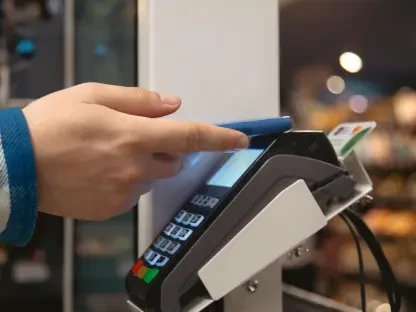What happens when a brand spends millions on dazzling digital campaigns, only to lose customers over a late delivery or a damaged package? In 2025, with U.S. online retail soaring toward a projected $1.6 trillion by 2027, the stakes for meeting customer expectations have never been higher, and many companies are discovering that their meticulously crafted marketing strategies are crumbling under the weight of operational oversights. This hidden disconnect between glossy promises and real-world delivery is costing brands not just sales, but trust and loyalty.
The significance of this issue cannot be overstated. As consumers grow accustomed to near-instant gratification from industry giants, even small hiccups in fulfillment—like unclear delivery timelines or subpar packaging—can tarnish a brand’s reputation. These gaps are more than logistical failures; they directly undermine the hefty investments poured into customer acquisition and storytelling. Addressing this chasm is no longer optional but a critical priority for staying competitive in an unforgiving e-commerce landscape.
The Silent Saboteur of Marketing Millions
Behind the scenes of polished ad campaigns lies a less glamorous reality: fulfillment failures that erode customer confidence. Brands allocate substantial budgets to build stunning online storefronts and compelling narratives, yet many overlook the final, crucial step of the customer journey. A delayed shipment or a broken item can unravel months of marketing efforts in an instant, leaving shoppers frustrated and skeptical.
This oversight creates a stark mismatch between expectation and experience. When a customer is drawn in by a seamless digital interface only to face uncertainty or disappointment post-purchase, the impact is immediate. Trust, once broken, is hard to rebuild, and the cost of acquiring new customers to replace those lost to poor fulfillment often outweighs the initial marketing spend.
Fulfillment Failures in the Spotlight
Customer expectations in 2025 are shaped by benchmarks set by leaders like Amazon Prime, where speed, transparency, and reliability are non-negotiable. With online retail continuing its rapid growth, shoppers demand more than just quality products—they expect flawless execution at every touchpoint. Failure to deliver on these standards results in measurable setbacks, from skyrocketing acquisition costs to diminished lifetime value.
The damage extends beyond numbers to brand perception itself. Negative experiences spread quickly through reviews and social media, amplifying the fallout. In a market where supply chain reliability often overshadows even the most creative campaigns, addressing these operational shortcomings becomes a strategic necessity for maintaining a competitive edge.
Where Brands Are Losing Ground
Specific fulfillment gaps are proving costly across multiple fronts, as highlighted by recent industry analysis of over 250 transactions in sectors like Apparel, Beauty, and Food & Beverage. One glaring issue is the neglect of abandoned cart recovery, with 93% of e-commerce brands failing to send reminders. Given that 84% of consumers abandon carts, this missed opportunity translates to significant revenue losses—potentially $13,000 monthly for a brand with 1,000 orders if just 5% of carts are left unrecovered.
Delivery uncertainty compounds the problem. Despite 58% of shoppers craving clear estimated delivery dates at checkout, only 1% of brands provide them, and 40% offer no timeline at all. Even when promises are made, 14% of brands miss delivery targets by an average of seven days, turning anticipation into irritation and eroding confidence in the brand’s reliability.
The unboxing experience, a critical physical touchpoint, also falls short for many. Around 12% of products arrive damaged due to inadequate packaging or handling, while only 36% of brands seize the chance to enhance the moment with samples or inserts. For 12% of consumers, a single poor delivery is enough to abandon a brand permanently, underscoring how operational missteps can negate marketing wins.
Voices from the Industry
Industry experts and insiders are sounding the alarm on how fulfillment gaps are reshaping brand success. A marketing director from a prominent Beauty company noted, “Millions went into perfecting our online image, but late deliveries we didn’t even monitor cost us loyal customers.” This frustration is echoed across sectors, where operational breakdowns turn positive first impressions into lasting resentment.
Data reinforces the urgency of these concerns, showing that handling “Where is my order?” inquiries can cost brands up to $5 per call—a preventable expense with better transparency. These insights reveal a fundamental truth: fulfillment isn’t merely a logistical detail but the foundation of how customers perceive and remember a brand. Ignoring it risks undoing even the most sophisticated marketing strategies.
Strategies to Close the Gap
Brands can transform these costly oversights into competitive strengths with practical, targeted actions. One immediate step is addressing abandoned carts by implementing personalized reminders via email or SMS, a feature readily available on most e-commerce platforms. Tracking recovery rates and incremental revenue ensures this becomes a core focus rather than an afterthought, shifting emphasis from costly acquisition to efficient retention.
Eliminating delivery uncertainty requires collaboration between marketing and operations to integrate real-time estimated delivery dates at checkout. Replacing vague timelines with precise commitments builds trust, reduces cart abandonment, and cuts down on expensive customer service interactions. This transparency turns a potential pain point into a point of confidence for shoppers.
Enhancing the unboxing experience offers another powerful opportunity. By treating packaging as a strategic investment rather than a cost to minimize, brands can audit materials for durability and add branded elements or personalized inserts. Leveraging data or AI to tailor these touches to purchase history transforms a routine delivery into a loyalty-building moment, ensuring the physical interaction matches the digital promise.
Reflecting on Missed Opportunities
Looking back, it was evident that many brands had poured immense resources into front-end marketing while allowing operational gaps to fester unnoticed. The disconnect between captivating campaigns and inconsistent fulfillment had quietly eroded customer trust across industries. Each late delivery or damaged package had chipped away at the very loyalty companies fought so hard to secure.
The lessons from these oversights pointed toward a clear path forward. Prioritizing alignment between marketing promises and post-purchase execution emerged as the key to rebuilding confidence. As the e-commerce landscape continued to evolve, success hinged on ensuring every customer touchpoint—from checkout to doorstep—reflected the brand’s commitment to excellence.









